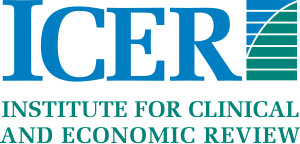— Of 10 high-expenditure drugs that had substantial 2023 net price increases, five were not supported by new clinical evidence; these increases accounted for $815 million in additional costs over one year —
BOSTON, December 12, 2024 – The Institute for Clinical and Economic Review (ICER) today published its latest report on Unsupported Price Increases (UPI) of prescription drugs in the United States, highlighting the top 10 drugs with substantial net price increases in 2023. ICER determined that five of those drugs lacked adequate evidence to support any price increase, which resulted in a total of $815 million incremental added costs to US payers in 2023. The five drugs with unsupported price increases are Biktarvy, Darzalex, Entresto, Cabometyx, and Xeljanz.
Downloads: Final Report
“We continue to see list price increases that are far above the rate of inflation for many of the costliest drugs,” stated Foluso Agboola, MBBS, MPH, ICER’s Vice President of Research. “These price hikes resulted in over $800 million in excess costs to the US health care system in just one year alone. This impacts everyone in the country, especially patients and their families. Over the past few years, ICER has played a role in highlighting substantial price increases. Since launching this report in 2019, we have noticed a decrease in the number of drugs that have significant price hikes without any new clinical evidence. In this report, half of the drugs we assessed had price increases in the setting of new evidence of additional benefits or reduced harm, while the other half lacked such evidence to support their higher price tag.”
Methodology and Key Findings
Consistent with our protocol announced in April 2024, ICER identified a list of prescription drugs that met each of the following criteria:
- Were among the top 250 drugs by 2023 US sales revenue;
- Had Wholesale Acquisition Cost (WAC) list price increases that exceeded the consumer price index plus 2%;
- Even after rebates and other concessions, had net price increases that placed them at the top of the list of drugs; and
- After net price increases were vetted with manufacturers, were found to be the top 10 drugs whose price increases — as opposed to volume increases — contributed to the largest increase in US spending.
ICER then determined whether, during 2023, there was any new moderate or high-quality evidence that these treatments provide a substantial improvement in net health benefit beyond what was previously known.
Following consideration of input from manufacturers and a systematic review of evidence available in published studies, ICER determined that five of the 10 drugs lacked adequate evidence to support a claim of additional clinical benefit. These five therapies, in order of the impact of their net price increases on US drug spending, are Biktarvy, Darzalex, Entresto, Cabometyx, and Xeljanz. The complete table is found below.

Importantly, ICER’s determination that new evidence exists for treatments should not be interpreted to mean that the new evidence justifies the level of price increase; a full cost-effectiveness assessment was not conducted to determine the comparative value.
About ICER
The Institute for Clinical and Economic Review (ICER) is an independent, non-profit research institute that conducts evidence-based reviews of health care interventions, including prescription drugs, other treatments, and diagnostic tests. In collaboration with patients, clinical experts, and other key stakeholders, ICER analyzes the available evidence on the benefits and risks of these interventions to measure their value and suggest fair prices. ICER also regularly reports on the barriers to care for patients and recommends solutions to ensure fair access to prescription drugs. For more information about ICER, please visit www.icer.org.
